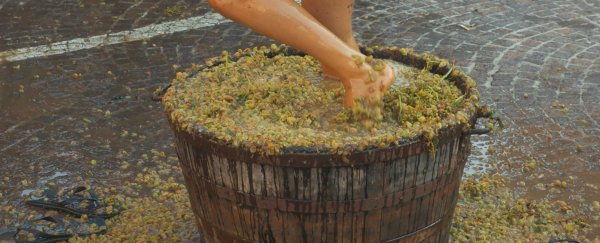Each year, winemakers have to make a call on how many grapes their vineyards are going to yield, and organise barrels, space and staff accordingly.
Unfortunately, their current estimates, which are based on early grape growth and past harvests, can be way off, and as a result, the Australian wine industry alone wastes up to A$200 million each year.
But now researchers from UNSW Engineering in Australia have developed a prototype robotic car that uses cameras to accurately estimate future yield before vines have even begun to bud. And it's probably the first time we've thought mixing cars and wine was a good idea.
The prototypes that have been developed so far are extremely affordable and are already being tested in New South Wales. If they work, they could help winemakers save hundreds of millions of dollars each year, according to the NSW Department of Primary Industries' viticulture research leader, Greg Dunn.
"We need to raise the yield estimation for grapes to a significantly better figure than it is now," said Dunn in a press release.
According to Mark Whitty, a mechatronics engineer from UNSW, who is leading one of the three teams responsible for building the devices, the current method used to estimate yield is far from an exact science.
"Early in the season, the estimates can be out by more than 50 percent," said Whitty in the release.
But image data captured by the robotic cars could shed light on vine parameters, such as berry diameter and bunch size, and would be able to weigh grape bunches and measure the volume of the picked fruits - long before harvest.
"Our intention is to drive through the vineyard and observe as much as we can of what's on the vines at different stages of maturity, and then use that to try and correlate what the yield is actually going to be," said Whitty.
Whitty is currently working on the lowest cost prototype, which uses a GoPro camera to capture this data. His model is being trialed at the winery Jaretts of Orange.
"We've found it gives good results for the majority of situations we have so far, and it is very much a budget solution that is easily applicable to farmers," said Whitty.
The researchers will also test other prototypes on different grape varieties, to work out which is the most accurate. If successful, the tests will then be expanded Australia-wide.
Here's hoping that all those savings might help reduce the overall cost of some of our favourite wines.
Want to find out more about innovative technology? Explore the research being conducted at UNSW Engineering.
